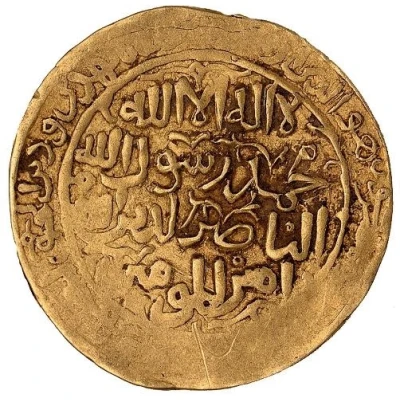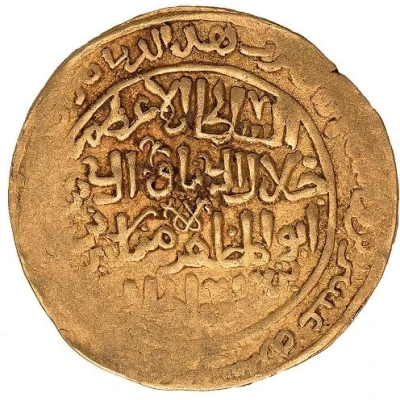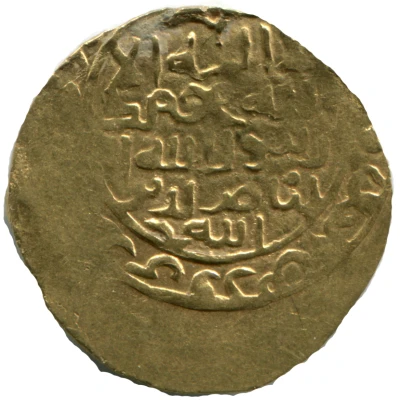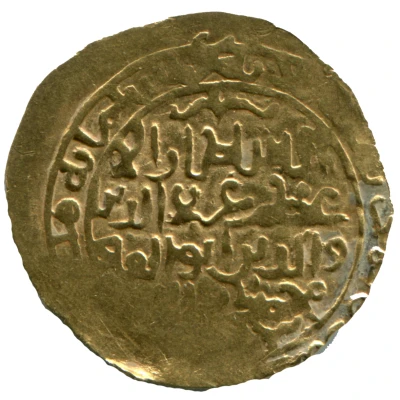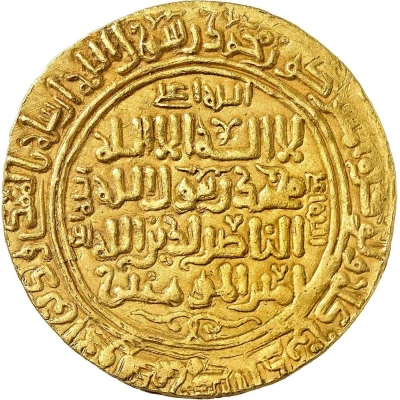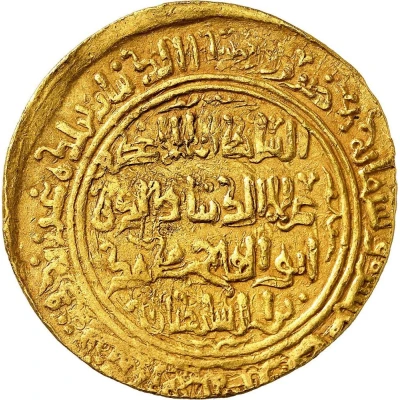Reverse
Al-Sultan al-a'zam/Jalal al-dunya wa'l-din/abu Muzaffar Mangubarni, remainder of legend illegible but probably the name of Mangubarni's father 'Ala al-din Muhammad; in margin duriba hadha'l-dinar ... decade of date - 'ashrin
Lettering:
السلطان الاعظم
جلال الدنیا و الدین
ابوالمظفر منگوبرنی
بن علا الدین
ضرب هذا الدینار ستمئه و عشرون بمدینه غزنه
Translation:
The Great Sultan
Majesty of the world and religion
Abu Al-Muzaffar
Bin Ulauddin
This dinar hit six hundred and twenty in the city of Ghazni
Edge
Plain
Comment
In 617h/AD.1220 the Mongol forces advanced into the Khwarazmshah's territories, driving 'Ala al-din Muhammad bin Takash before them. In a state of panic, he warned his subjects not to try to withstand this invincible army. He eventually escaped to an island in the Caspian Sea, where he died shortly after. His death resulted in the usual struggle for the leadership among his sons, the heir presumptive Uzlaq Sultan, Aq Sultan and Jalal al-din Mangubarni. It was Mangubarni who won, which made his brothers so angry that they plotted to kill him. He managed to escape to Nishapur, but was there for no more than a day before the Mongol army arrived at the city gates. Mangubarni then fled to Ghazna, hotly pursued by the Mongols who finally gave up the chase, leaving him to travel to Parvan in the Hindu Kush. The Mongols followed him there, but Mangubarni defeated them after a fierce two-day battle. He returned to Ghazna and planned to seek safety beyond the Indus River but he was now pursued by an even greater army led by Chinghiz Qa'an himself and he only managed to escape by riding his horse across the Indus River. Mangubarni's story does end happily, for when he reached the other side of the river, he raised his sword, lance and shield, at which Chinghiz, having given up the pursuit, cried out to his sons in amazement and admiration at Mangubarni's courage. Although the fabric and calligraphy on this very rare but badly struck coin are typical of the Ghazna mint, Mangubarni is not believed to have struck any coins in the city, but at the nearby fortress of Qal'a Nay. Although only the decade survives it is sufficient to assume that the coin must have been in struck in 620h.
